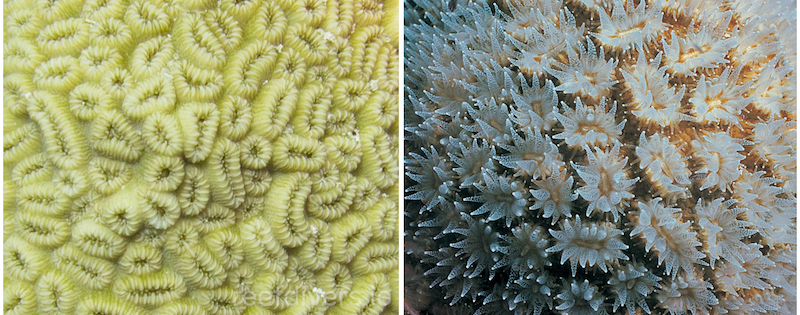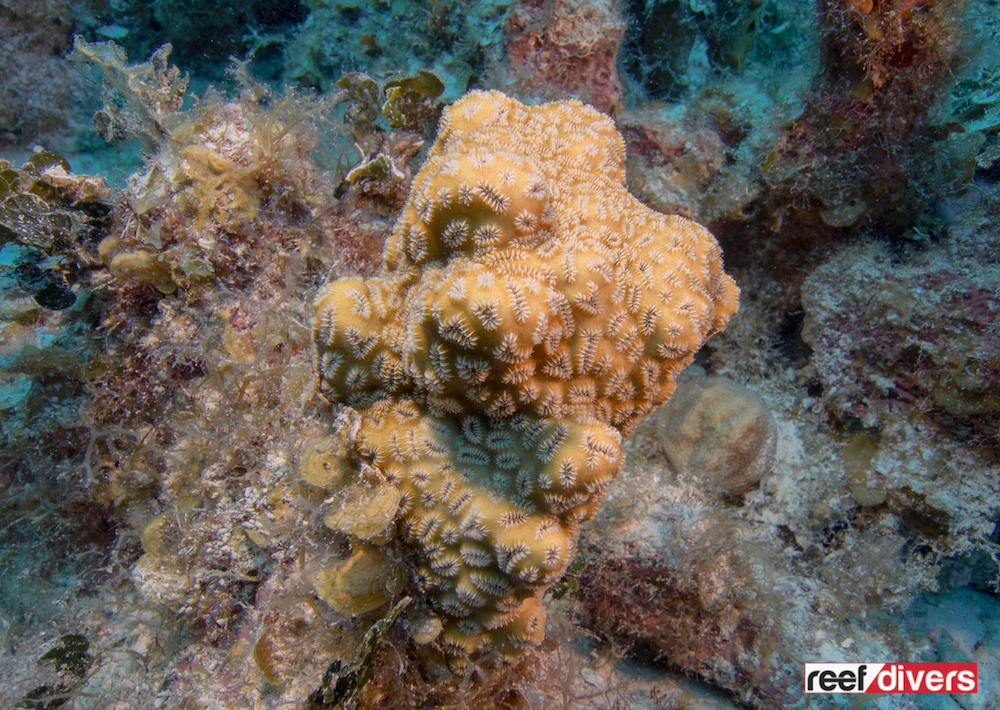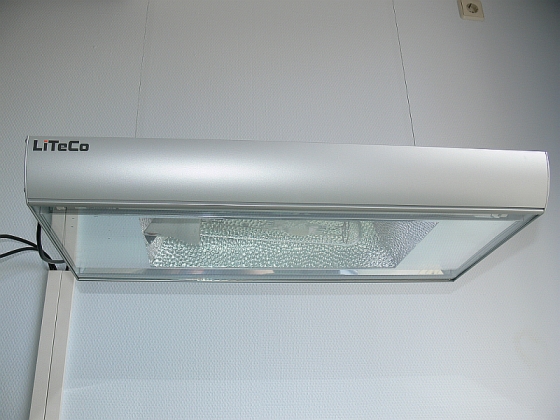Dichocoenia stokesi
If you’ve never gone out searching for this unusual species of coral, chances are you wouldn’t know it exists—we sure didn’t. A creamy white colony of Dichocoenia caught our eye while diving in the Cayman Islands, and we had to investigate.
Part of learning to identify coral is looking for corals which stick out on the reef. I grabbed a couple photos of this strange looking species and later identified it as Dichocoenia stokesi.
Having an underwater camera makes identifying coral a lot easier than trying to remember what you saw underwater. When you find a new coral take a few photos of the colony shape and then a close-up shot of the corallites. We use the websites Aims coral fact sheets, Corals of the world and various coral books we have at home to identify new species.
Elliptical Star Coral
Dichocoenia is commonly known as Pineapple coral or Elliptical star coral. And, even before looking into this species we thought it looked like a pineapple!
Depending on where you look there are two listed species of Dichocoenia. D. stokesi and D. stellaris , however, some scientist say only one species D. stokesi exists.
We found four colonies of Dichocoenia and interestingly two of them had a uniform creamy yellow color, while the other two colonies had a white rim on the corallite and contrasting yellow colony surface. The jury is still out whether these are two species or just different forms of the same species.
Dichocoenia is an encrusting coral which forms domes or spheres. Some colonies can create curious shapes, and it just depends on what rock or old coral skeleton Dichocoenia is covering. At the base of the coral, you can see how it appears to be melting on the rock as it slowly encrusts and grows in size.
If Dichocoenia looks similar to the Eusmilia or Meandrina corals we wrote about last week, that is because they are all from the same family Meandrinidae. The last Caribbean coral in this family is Dendrogyra cylindrus (pillar coral).
Once you know what to look for Dichocoenia is an easy coral to spot. This species is relatively uncommon, yet we did manage to find four colonies on three separate dives in the Cayman Islands.
The Coral Diaries series is a list of corals we have seen while diving around the world. We’ve created this series so that you can learn more about corals, and how to identify them on the reef. We encourage you to send us your coral pictures and leave a comment in the section below to learn more about the interesting species you’ve found while diving.



